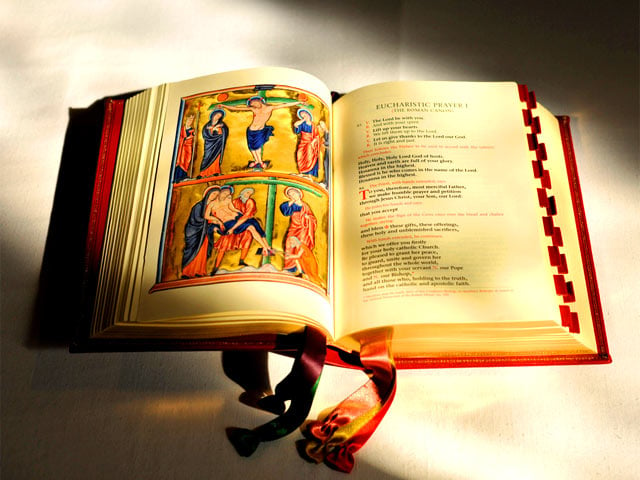- Home
- Our Community
- Our Faith
- Our Ministries
-
Parish Life
- Calendar of Events
- St. Aidan's Video Links
- Parish Blog
- News Archive
- Mass Etiquette and Information
- Ad Orientem News and Facts
- Catholic Links
- Prayers and Announcements
- Luis Dizon Reflections - Archive
- Bulletin
- Contact Us
- Search

The Bronze Serpent (Exaltation of the Cross)
Click here for this Sunday’s readings
In the book of Numbers, we read about how God punished the Israelites by sending fiery serpents among them. When they repented and asked Moses to intercede with God on their behalf, God instructed Moses to construct an image of a bronze serpent, and told the Israelites that if they looked upon the image, they would be healed.
The bronze serpent is one of many images that God directly commands or permits the Israelites to produce, which also include the cherubim statues on the Ark and the Holy of Holies in the Jerusalem temple. The Catechism states that this shows that the prohibition against graven images was never an absolute prohibition of all images, but also points out that every permitted image pointed forward to salvation in the incarnate Word (CCC 2130).
The use of the serpent image is also highly significant, as serpents were associated in many cultures with danger and death, due to their highly venomous nature. The archetypal serpent, of course, was the one which tempted Eve and caused the fall. Through the bronze serpent, God is turning the very source of death for the Israelites and turning it into their source of healing.
This is key for understanding why Jesus points to the bronze serpent as a type of His own crucifixion. He says, “just as Moses lifted up the serpent in the wilderness, so must the Son of Man be lifted up” (John 3:14). In both cases, something that was seen as a source of death (the serpent/the cross) is turned into a source of healing. In both cases, God has made a way for rebellious sinners to be saved.
As we celebrate the feast of the Exaltation of the Cross, we can see God working in salvation history to prepare the way for our ultimate salvation in Christ’s sacrifice, which was prefigured by the bronze serpent.
